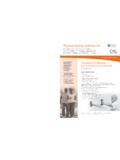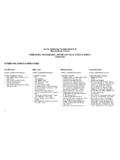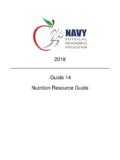Transcription of Basic carbohydrate counting Vegetables - Diabetes …
1 Basic carbohydrate countingfor Diabetes managementCarbohydrate counting is a flexible way to plan your meals. It focuses on foods that contain carbohydrate as these raise your blood glucose the most. Follow these steps to count carbohydrates and help manage your blood glucose levels. Your registered dietitian will guide you along the 1 Make healthy food choicesStep 2 Focus on carbohydrate Step 5 Monitor effect on blood glucose levelStep 4 Determine carbohydrate content Enjoy a variety of Vegetables , fruits, whole grains, low fat milk products, and meat and alternatives at your meals.
2 A variety of foods will help to keep you healthy. Use added fats in small amounts. This helps to control your weight and blood cholesterol. Choose portion sizes to help you to reach or maintain a healthy weight. Work with your health care team to correct blood glucose levels that are too high or too low. Write down what you eat and drink throughout the day. Be sure to note the portion sizes. You may need to use measuring cups and food scales to be accurate. Record the grams of carbohydrate in these foods and drinks. For carbohydrate content of foods, check the Beyond the basics resources, food packages, food composition books, restaurant fact sheets and 3 Set carbohydrate goals Your dietitian will help you set a goal for grams of carbohydrate at each meal and snack.
3 This may be the same from day to day or may be flexible, depending on your needs. Aim to meet your target within 5 grams per meal or snack. Your body breaks down carbohydrate into glucose. This raises your blood glucose levels. carbohydrate is found in many foods including grains and starches, fruits, some Vegetables , legumes, milk and milk alternatives, sugary foods and many prepared foods. Meat and alternatives, most Vegetables and fats contain little carbohydrate . Moderate servings will not have a big effect on blood glucose September 2008 VegetablesGrains &StarchesMeat &Alterna-tivesFinding carbohydrate valuesLet s carb count!
4 Using the Nutrition Facts tableSample carbohydrate countingNutrition FactsPer 90 g serving (2 slices)Amount % Daily ValueCalories 170 Fat g 4 %Saturated g 5 %+ Trans 0 gCholesterol 0 mgSodium 200 mg 8 % carbohydrate 36 g 13 %Fibre 6 g 24 %Sugars 3 gProtein 8 gVitamin A 1 % Vitamin C 0 %Calcium 2 %Iron 16 %The amount of carbohydrate in a food is listed on the Nutrition Facts table. The amount listed is for the serving size given. Are you eating more, less, or the same amount? Compare your serving size to figure out the amount of carbohydrate you are eating.
5 The total amount of carbohydrate in grams is listed first. This number includes starch, sugars and fibre. (Starch is not listed separately.) Fibre does not raise blood glucose and should be subtracted from the total carbohydrate (ie. 36 g carbohydrate 6 g fibre = 30 g available carbohydrate ).FOODPORTION SIZEGRAMS OFCARBOHYDRATE CARBOHYDRATECHOICESE xample sandwich lunchBread, whole wheat*Chicken breastMargarineCarrot sticks*Green grapes*Milk*Tea/coffeeWhat did you eat and drink?2 slices2 oz/60 g1 tsp/5 mL cup/125 mL cup/125 mL 1 cup/250 mL 1 cup/250 mL30 g00015 g15 g02000110 TOTAL 60 g 4 choicesTOTAL*taken from the Beyond the basics resources 2005111019 08-377 09/08 Q-2 MFor more information on labelling, carbohydrate counting and fibre, please visit the Canadian Diabetes Association website.














